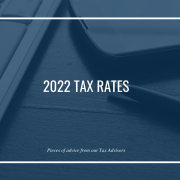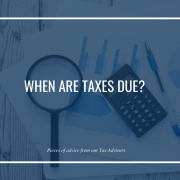How Do Taxes Work?
The U.S. uses a system called “progressive tax.” That means that the IRS has tax “brackets” with associated tax “rates.” These brackets correspond to various income levels. The higher your income, the higher your tax bracket, and thus your tax rate.
If your income increases to where you get bumped into the next tax bracket, don’t panic. The higher bracket does not mean that you have to pay that higher rate on all of your earnings. With a progressive tax system, only the dollars above the tax bracket threshold are taxed at that higher bracket’s higher rate. The “first dollars” that you earn every year are always taxed at the lowest rates, even if you end up with high income for the year.
Also, different terms can be confusing… Let’s explain three major terms below.
Total Income… The “big number.” This is your total wages, tips, interest, dividends, distributions, net business income, etc.
Adjusted Gross Income… This is Total Income, less adjustments for retirement contributions, Medicare premiums, student loan interest, etc.
Taxable Income… This is Adjusted Gross Income, less your standard (or itemized) deductions.
Taxable Income is the number that is applied to the tax brackets (2021 brackets below) to determine your total federal tax. So, even if you have a high Total Income, your adjustments and deductions could lower your Taxable Income to a level that makes your tax rate lower than you might expect.


John Vandyke, Founder










Leave a Reply
Want to join the discussion?Feel free to contribute!